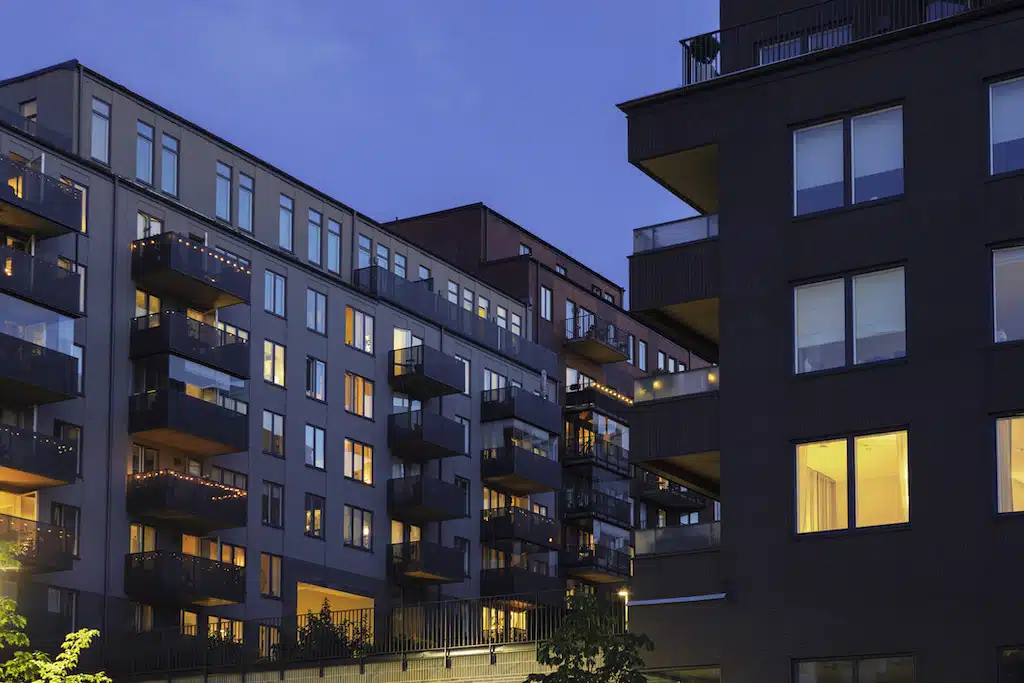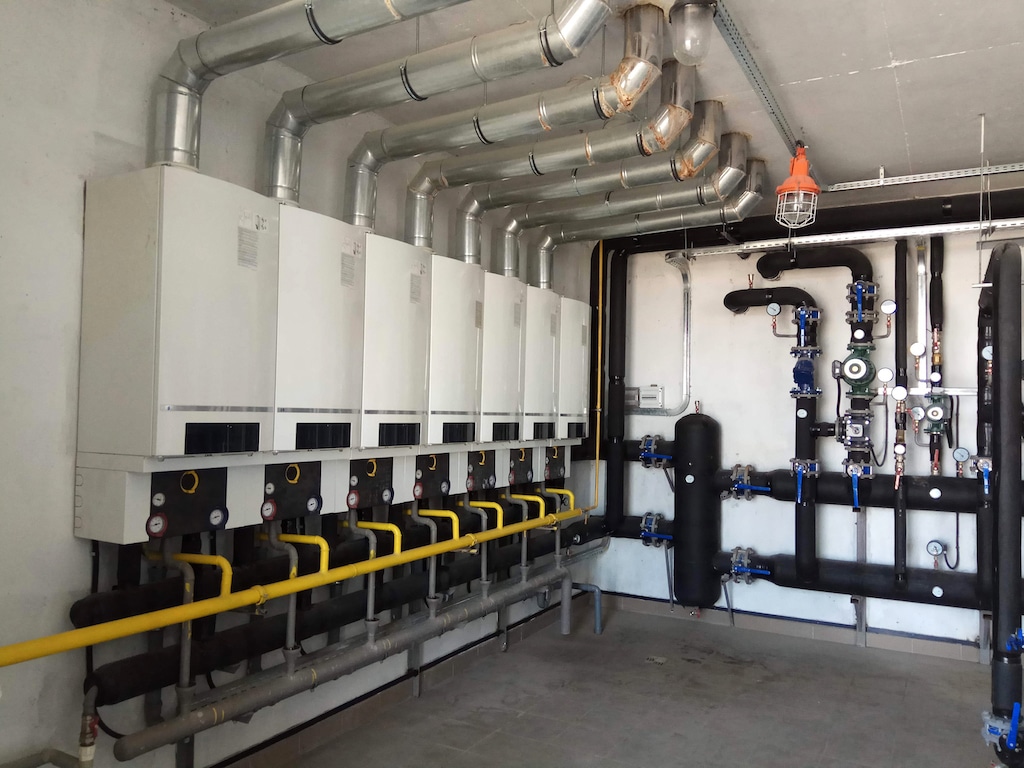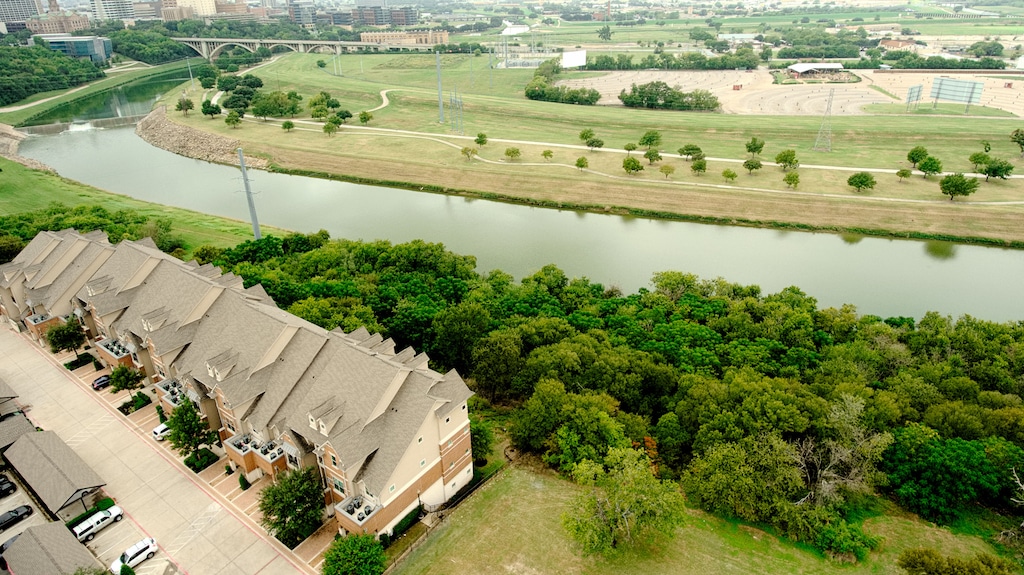
Efficient Multi-Family Heating Systems: A Key to Comfortable Living
Have you ever wondered how multi-family buildings stay warm and cozy, especially during the harsh winter months?
The secret lies in their heating systems, specifically designed to cater to multiple families under one roof. As a homeowner or property manager, understanding these systems is crucial for maintaining a comfortable living environment.
In this article, we delve into the world of multi-family heating systems. We’ll explore their importance, how they differ from single-family systems, and the latest technologies making these systems more efficient and reliable.
Whether you’re looking to install, upgrade, or simply understand these systems, this guide has got you covered.
What are Multi-Family Heating Systems?
Multi-family heating systems are advanced, specialized solutions crafted to deliver optimal heating to buildings housing multiple residential units, such as apartments, condominiums, and townhouses.
These systems play a pivotal role in ensuring that each living space within the complex receives consistent and efficient heat distribution, crucial for maintaining comfort during colder months.
Unlike heating systems in single-family homes, multi-family heating systems must address a broader range of challenges.
They need to cater to varying preferences and requirements of different households, all while operating under a unified management system. This demands a delicate balance between individual control and centralized efficiency.
The design of these systems often involves complex networks of boilers, furnaces, or heat pumps, which work in tandem with an array of pipes or ductwork to transport heat to each unit effectively.
Moreover, these systems are not just about providing warmth; they are also about doing so in an energy-efficient manner.
With rising energy costs and growing environmental concerns, modern multi-family heating systems are increasingly incorporating green technologies. Features like programmable thermostats, energy-efficient boilers, and even integration with renewable energy sources are becoming standard.
This not only helps in reducing the carbon footprint of the building but also aids in significantly cutting down utility expenses for residents.
In essence, multi-family heating systems represent a critical component in the infrastructure of multi-unit dwellings, ensuring a harmonious blend of comfort, efficiency, and sustainability.

Photo By SerhiiKrot at iStock
Understanding the Basics of Multi-Family Heating Systems
Core Components
At the heart of multi-family heating systems are essential components like boilers, furnaces, or heat pumps. These are the primary sources of heat generation, crucial for maintaining a comfortable temperature in each residential unit.
The choice between boilers, furnaces, and heat pumps often depends on factors like climate, building size, and energy efficiency goals.
Boilers use water to transport heat, furnaces use forced air, and heat pumps transfer heat from outside to inside, each with its unique advantages.
Heat Distribution Network
Once the heat is generated, it needs to be effectively distributed throughout the building.
This is achieved through a well-designed network of pipes or ducts, which forms the circulatory system of the heating setup. In the case of boilers, hot water or steam is circulated through pipes to radiators or baseboard heaters in each unit.
For furnace systems, ductwork is used to channel warm air to different areas.
The design and maintenance of this network are crucial for ensuring that heat is evenly and efficiently distributed to all units, avoiding hot and cold spots.
Efficiency and Energy Consumption
The efficiency of multi-family heating systems is a paramount consideration. These systems must cater to the varying heating needs of multiple families while minimizing energy consumption.
This is not just a matter of cost savings but also environmental responsibility. Modern systems often incorporate energy-efficient designs, such as condensing boilers that capture additional heat from exhaust gasses or variable speed blowers in furnaces that adjust airflow based on demand.
Additionally, the integration of smart thermostats and zoning capabilities allows for more precise control of heating, further enhancing efficiency and reducing unnecessary energy usage.
Understanding the basics of multi-family heating systems involves recognizing the importance of their core components, the intricacies of their heat distribution networks, and the critical need for efficiency and reduced energy consumption.
These systems are not just about providing warmth; they are about doing so in the most effective, efficient, and environmentally friendly way possible.
Types of Multi-Family Heating Systems For Your Home
Centralized Heating Systems
Centralized heating is a common approach in family heating systems. In this setup, a single, large-scale heating source, such as a boiler or a furnace, is used to generate heat for the entire building.
This heat is then distributed to each apartment or unit through a network of pipes or ducts.
Centralized systems are often preferred for their efficiency in larger buildings, as they can provide consistent heating to all units from a single point of control.
However, one of the drawbacks is the lack of individual control for residents over their heating preferences.
Decentralized Heating Systems
In contrast to centralized systems, decentralized heating systems offer individual control to each unit in a multi-family building.
These systems typically involve separate heating units for each apartment, such as individual furnaces, boilers, or heat pumps. This type of system allows residents to control the temperature in their own space, leading to increased comfort and potentially better energy efficiency, as each unit can regulate its heating usage based on individual needs.
However, decentralized systems can be more costly to install and maintain, as they require multiple heating units and separate distribution networks.
Hybrid Systems
A hybrid approach to family heating systems combines elements of both centralized and decentralized systems.
In a hybrid system, a central boiler or furnace may provide the primary source of heat, supplemented by individual heating units in each apartment for added control and comfort.
This allows for a balance between efficiency and individual preference, making it a versatile option for many multi-family buildings.
How to Choose the Right System
Selecting the right type of heating system for a multi-family building depends on various factors, including the size of the building, the climate, the budget for installation and maintenance, and the preferences of the residents.
Centralized systems might be more suitable for larger buildings in colder climates due to their efficiency in distributing heat over large areas.
Decentralized systems, on the other hand, could be more appropriate for smaller buildings or in regions where individual heating control is a priority.
Hybrid systems offer a middle ground, providing both efficiency and individual comfort.
Understanding the different types of multi-family heating systems is crucial for property managers and homeowners.
Whether it’s a centralized, decentralized, or hybrid system, each has its unique advantages and suitability, depending on the specific requirements of the multi-family building.
Advantages of Modern Multi-Family Heating Systems
Enhanced Energy Efficiency
One of the most significant benefits of modern multi-family heating systems is their enhanced energy efficiency.
These systems are designed with the latest technology to minimize energy waste and maximize heat output.
By using advanced components like high-efficiency boilers, heat pumps, and smart thermostatic controls, these systems ensure that energy consumption is kept at a minimum.
This not only leads to reduced utility bills for residents but also contributes to a lower environmental impact, aligning with today’s increasing focus on sustainability and eco-friendliness in housing.
Improved Temperature Control
Modern systems also excel in providing superior temperature control.
With advancements in thermostat technology, including programmable and smart thermostats, residents can easily adjust and control the heating in their units to suit their individual comfort levels.
This personalized control is particularly beneficial in multi-family settings, where different households may have varying temperature preferences.
Smart thermostats can also learn residents’ schedules and adjust heating accordingly, ensuring optimal comfort while reducing energy waste.
Ease of Maintenance
Another advantage of contemporary multi-family heating systems is their ease of maintenance.
Newer systems are designed with simplicity and longevity in mind, making routine maintenance tasks less cumbersome. Features like self-diagnosing functions and easy-access panels simplify the process for maintenance staff, leading to quicker repairs and less downtime.
Regular maintenance ensures that the system operates efficiently and can also extend the lifespan of the heating system, ultimately saving money in the long term.
Integration with Renewable Energy
Modern multi-family heating systems are increasingly being integrated with renewable energy sources, such as solar panels and geothermal energy.
This integration not only further reduces the carbon footprint of the building but also offers a long-term, sustainable solution for heating needs.
By harnessing renewable energy, these systems can provide a consistent and eco-friendly heat supply, making them an attractive option for environmentally conscious residents and property managers.
Modern multi-family heating systems offer a range of advantages, including enhanced energy efficiency, improved temperature control, ease of maintenance, and the potential for integration with renewable energy sources.
These benefits make them an ideal choice for multi-family buildings looking to provide comfortable, cost-effective, and environmentally responsible heating solutions.
Maintenance and Upkeep of Multi-Family Heating Systems
Importance of Regular Maintenance
Regular maintenance is vital for ensuring the longevity and efficiency of multi-family heating systems.
These systems, due to their complexity and the high demand placed on them, require consistent check-ups and servicing.
Regular maintenance not only helps in keeping the system running smoothly but also plays a crucial role in preventing unexpected breakdowns, which can be costly and inconvenient for residents.
Routine Inspections
Routine inspections are a cornerstone of effective maintenance. These should be conducted by qualified professionals who can assess the condition of boilers, furnaces, heat pumps, and other components of the heating system.
Inspections often involve checking for wear and tear, ensuring that all parts are functioning correctly, and identifying any potential issues that could lead to bigger problems.
Regular inspections help in catching minor issues before they escalate into major repairs, thereby saving time and money in the long run.
Cleaning and Component Care
Cleaning of components is another essential aspect of maintaining multi-family heating systems.
Over time, parts like burners, filters, and ducts can accumulate dust and debris, which can hinder the system’s efficiency and, in some cases, pose a fire hazard.
Regular cleaning ensures that the heating system operates at optimal efficiency and is safe for use. This not only improves the air quality within the residential units but also enhances the overall performance of the heating system.
Timely Repairs and Replacements
Addressing repairs promptly is crucial in the upkeep of multi-family heating systems. Delaying repairs can lead to further damage and increased costs.
It’s important for property managers to have a reliable maintenance team that can respond quickly to any issues.
Additionally, keeping an eye on the lifespan of the system’s components and planning for replacements when necessary is key to maintaining a reliable and efficient heating system.
Training and Awareness
Educating maintenance staff and residents about the proper use and care of the heating system is also beneficial.
Training for staff on the latest maintenance techniques and awareness programs for residents can lead to better handling and usage of the system, ultimately contributing to its longevity and efficiency.
Regular maintenance, including routine inspections, cleaning, timely repairs, and educational initiatives, is essential for the optimal functioning of family heating systems.
These practices not only ensure the system’s longevity and efficiency but also contribute to the comfort and safety of the residents.
Future Trends in Multi-Family Heating Systems
Emphasis on Sustainability
The future trajectory of family heating systems is increasingly leaning towards sustainability.
As environmental concerns become more pressing, there is a growing demand for heating solutions that are not only efficient but also eco-friendly.
This shift is driving innovation in the industry, leading to the development of systems that reduce carbon footprints and promote sustainable living in multi-family dwellings.
Smart Thermostat Technology
One of the key innovations shaping the future of these systems is the integration of smart thermostat technology.
Smart thermostats offer advanced features like remote control, learning capabilities, and energy usage analytics. These devices can adapt to the habits of residents, automatically adjusting the temperature for optimal comfort and energy efficiency.
By providing detailed insights into energy consumption patterns, smart thermostats enable residents and property managers to make informed decisions that can lead to significant energy savings.
Renewable Energy Integration
Another significant trend is the integration of renewable energy sources with family heating systems.
Solar panels, geothermal systems, and biomass energy are becoming more common in multi-family housing.
These renewable sources can either supplement or entirely replace traditional heating methods, drastically reducing reliance on fossil fuels and lowering greenhouse gas emissions.
As technology advances, the cost of implementing these renewable solutions is decreasing, making them a more viable option for many properties.
Advanced Heat Recovery Systems
Heat recovery systems are also gaining traction in the field of multi-family heating.
These systems capture and reuse heat that would otherwise be wasted, such as the heat from exhaust gasses in boilers or furnaces.
By recycling this heat, these systems significantly improve overall energy efficiency, reducing both operating costs and environmental impact.
Focus on Health and Air Quality
Future trends also include a stronger focus on indoor air quality and health.
Heating systems are being designed to not only provide warmth but also to ensure that the air quality within residential units is healthy. This involves advanced filtration systems and better ventilation strategies to reduce pollutants and maintain a healthy indoor environment.
Customizable and Modular Solutions
Customization and modularity are becoming important features in family heating systems.
As each multi-family building has unique needs, systems that offer flexibility and scalability are increasingly preferred.
Modular systems can be tailored to the specific requirements of a building, allowing for easier upgrades and adaptations as needs change over time.
The future of family heating systems is marked by a strong push towards sustainability, with innovations like smart thermostats, renewable energy integration, advanced heat recovery, a focus on health and air quality, and customizable solutions leading the way.
These trends not only aim to enhance energy efficiency and environmental friendliness but also to improve the overall living experience in multi-family dwellings.
Installation Tips for Multi-Family Heating Systems
Assessing Building Requirements
Before the installation of a new multi-family heating system, a thorough assessment of the building’s specific needs is essential. This process involves evaluating various factors that will influence the choice of the heating system:
Building Size and Unit Count
The size of the building and the number of units it contains are crucial in determining the capacity and type of heating system required.
Insulation Quality
Good insulation is key to heating efficiency. Assessing the insulation quality can help in choosing a system that complements the building’s existing thermal properties.
Local Climate
The climate in your area will significantly impact the type of heating system needed. Buildings in colder regions may require more robust systems compared to those in milder climates.
Professional Assessment
Consulting with heating system experts who can provide a professional evaluation is recommended. They can offer insights into the most suitable systems (centralized, decentralized, or hybrid) based on the building’s characteristics.
How to Choose the Right System
Selecting the appropriate heating system is a balance of several factors:
Efficiency vs. Cost: While energy-efficient systems might have a higher upfront cost, they can offer long-term savings through reduced energy bills.
Resident Preferences: Consider the preferences and needs of the residents. Systems that offer individual control, like decentralized systems, might be more appealing in certain settings.
Long-Term Operational Costs: Factor in not just the installation expense but also the long-term operational costs, including maintenance and energy consumption.
Professional Installation
The installation of multi-family heating systems should always be handled by professionals:
Here’s why:
Qualified Technicians
Ensure that the installation is carried out by certified technicians with experience in multi-family heating systems.
Safety and Efficiency
Proper installation is crucial for the safety and efficiency of the system. Incorrect installation can lead to increased energy consumption and potential safety hazards.
Longevity of the System
A professionally installed system is more likely to have a longer operational life, reducing the need for frequent repairs or replacements.
Installing a multi-family heating system requires careful consideration of the building’s specific needs, choosing the right system balancing efficiency and cost, and ensuring professional installation for optimal performance and safety.
These steps are crucial in achieving a heating solution that is efficient, cost-effective, and suitable for the residents’ comfort.
Cost Considerations for Multi-Family Heating Systems
Initial Investment
The upfront cost of installing a family heating system can vary significantly, influenced by several factors:
Type of System: The choice between centralized, decentralized, or hybrid systems can impact the initial cost. Centralized systems often require a larger investment due to their scale and complexity.
Building Size: The size and layout of the building play a crucial role in determining the cost. Larger buildings may require more extensive systems with higher capacity.
System Complexity: Advanced features like integration with smart technology or renewable energy sources can add to the complexity and cost of the system.
Operating Costs
The long-term operating costs are an important consideration:
Energy Consumption: The efficiency of the heating system directly affects energy consumption and ongoing utility expenses. Energy-efficient models, while potentially more expensive initially, can offer significant savings in the long run.
Maintenance and Repairs: Regular maintenance is essential to keep the system running efficiently and to avoid costly repairs. Budgeting for routine check-ups and potential repairs is a key aspect of managing operating costs.
Grants and Incentives
Financial incentives can play a significant role in offsetting initial costs:
Regional Incentives: Many regions offer grants, rebates, or tax incentives for installing energy-efficient heating systems. These can significantly reduce the initial financial burden and encourage the adoption of sustainable technologies.
Encouraging Green Technologies: Such incentives are often part of broader initiatives to promote environmental sustainability and energy conservation in residential buildings.
Return on Investment (ROI)
Evaluating the ROI is crucial when investing in a new heating system:
Lower Utility Bills: Energy-efficient systems can lead to reduced utility costs, offering savings over the system’s lifespan.
Property Value: A modern, efficient heating system can enhance the value of the property and be an attractive feature for potential buyers or renters.
Budgeting for Maintenance
Proper budgeting for maintenance ensures system longevity:
Preventative Maintenance: Allocating funds for regular maintenance can prevent larger, more expensive issues from arising.
Extending System Lifespan: Regular upkeep helps extend the life of the heating system, ensuring it remains efficient and reliable for years.
When considering multi-family heating systems, it’s essential to evaluate the initial investment, operating costs, potential grants and incentives, the return on investment, and the importance of budgeting for maintenance.
These factors collectively influence the financial feasibility and long-term benefits of the heating system, contributing to a more efficient, cost-effective, and comfortable living environment for residents.

Photo By PeopleImages at iStock
Enhancing Comfort and Efficiency in Multi-Family Heating Systems
Innovative Heating Controls for Multi-Unit Buildings
In the realm of multi-family heating systems, the integration of innovative heating controls stands as a game-changer.
These controls go beyond traditional thermostats, offering centralized management of heating across multiple units. This technology allows for the adjustment of temperatures in different areas of a building, catering to the specific needs of each unit while maintaining overall energy efficiency.
Such systems can be programmed to reduce heating in unoccupied units or common areas during off-peak hours, significantly cutting down energy costs.
Integration with Smart Home Systems
The future of multi-family heating systems is closely tied to the rise of smart home technology.
By integrating heating systems with smart home platforms, residents can enjoy unprecedented control over their living environment. This includes remote adjustments of heating settings via smartphones or voice-activated devices, providing both convenience and efficiency.
For property managers, this integration offers real-time monitoring and analytics, enabling proactive maintenance and energy usage optimization.
Eco-Friendly Heating Solutions
Sustainability is a key factor in modern multi-family heating systems.
Eco-friendly solutions such as solar-assisted heating or the use of biomass fuels are becoming more prevalent. These systems not only reduce the carbon footprint of the building but also align with the growing environmental consciousness among residents.
Additionally, incorporating green heating solutions can qualify buildings for various environmental certifications, enhancing their market value and appeal.
Zoning Systems for Personalized Comfort
Zoning systems represent a significant advancement in multi-family heating, allowing different areas of a building to be heated to different temperatures.
This is particularly useful in buildings with diverse occupancy patterns or varying exposure to natural elements.
Zoning can be achieved through advanced ductwork systems or the installation of multiple smaller heating units, each serving a specific area. This approach ensures that heating is provided where and when it’s needed, enhancing both comfort and efficiency.
Future-Proofing Heating Systems
As technology evolves, future-proofing multi-family heating systems becomes essential. This involves designing systems that are adaptable to future technological advancements and changing environmental regulations.
Incorporating modular components, which can be easily upgraded or replaced, ensures that the heating system remains at the forefront of efficiency and sustainability.
Enhancing comfort and efficiency in family heating systems involves embracing innovative controls, integrating with smart home systems, adopting eco-friendly solutions, implementing zoning for personalized comfort, and future-proofing the systems.
These advancements not only improve the living experience for residents but also contribute to the overall sustainability and value of multi-family properties.
Advanced Technologies in Multi-Family Heating Systems
Smart Heat Management and Efficiency
Advancements in family heating systems have led to the development of smart heat management technologies. These systems use sensors and AI algorithms to analyze heating patterns and optimize energy use.
By monitoring external temperatures and internal heating demands, they adjust the heating output accordingly, ensuring maximum efficiency.
This smart management not only reduces energy consumption but also maintains a consistent and comfortable indoor climate.
Renewable Energy Integration
The integration of renewable energy sources in multi-family heating systems is a significant step towards sustainability.
Systems that utilize solar energy, geothermal power, or biomass significantly reduce reliance on traditional, non-renewable energy sources. This shift not only aligns with environmental goals but also offers long-term cost savings in terms of reduced energy bills.
The integration of these green technologies is becoming increasingly feasible and popular in modern multi-family residential buildings.
Heat Recovery Ventilation Systems
Heat recovery ventilation (HRV) systems represent a major innovation in multi-family heating systems.
These systems capture heat from exhaust air and use it to warm incoming fresh air. This process significantly improves energy efficiency, as it reduces the need for additional heating.
HRV systems also ensure a constant supply of fresh air, which is vital for maintaining healthy indoor air quality in densely populated multi-family buildings.
Automated Maintenance and Diagnostics
The future of multi-family heating systems also includes automated maintenance and diagnostic tools.
These systems can predict and identify issues before they become major problems, facilitating timely maintenance and repairs. This proactive approach not only extends the lifespan of the heating system but also ensures it operates at peak efficiency, reducing downtime and inconvenience for residents.
Enhancing Resident Comfort with Personalized Heating
Personalized heating solutions are becoming a key feature in modern multi-family buildings.
These systems allow residents to customize the heating in their individual units according to their personal preferences. This level of customization not only enhances resident comfort but also contributes to overall energy savings, as heating is used more efficiently and only where needed.
The advancement of technologies in multi-family heating systems is revolutionizing how heat is managed, delivered, and conserved in residential buildings.
From smart heat management to renewable energy integration, and from heat recovery ventilation to automated maintenance, these innovations are setting new standards for efficiency, sustainability, and resident comfort in multi-family housing.
Top 5 Maintenance Tips for Multi-Family Heating Systems
1. Balancing Health, Comfort, and Efficiency
A key consideration in designing multi-family heating systems is balancing health, comfort, and efficiency.
Systems should be designed to provide healthy air quality and comfortable temperatures without compromising energy efficiency. This balance is crucial for the well-being of residents and the sustainability of the building.
2. Moisture Control and Mold Prevention
Controlling indoor moisture levels is essential to prevent mold growth in multi-family buildings.
Modern heating systems should include features that manage humidity effectively, especially in humid climates. This not only ensures the durability of the building but also contributes to a healthier living environment.
3. Optimizing for Part-Load Humidity Control
In climates with varying temperatures, it’s important for heating systems to control humidity effectively during part-load conditions.
Systems should be capable of removing sufficient moisture even when the temperature isn’t high enough to trigger extended cooling periods. This helps maintain a comfortable and healthy indoor environment throughout the year.
4. Energy Efficiency and Building Performance
Energy efficiency is a major factor in the performance of multi-family buildings. Heating systems should be designed to meet high efficiency standards, potentially qualifying for green building certifications.
This includes using high-efficiency HVAC equipment and ensuring tight building envelopes to reduce energy consumption.
5. Balanced Ventilation for Indoor Air Quality
Implementing balanced ventilation systems in multi-family buildings can significantly improve indoor air quality.
These systems ensure that equal amounts of fresh outdoor air are brought in and stale indoor air is expelled, reducing the risk of contaminant buildup and enhancing overall air quality.
These strategies highlight the importance of designing multi-family heating systems that are not only efficient and comfortable but also contribute to the health and well-being of residents.
By focusing on moisture control, energy efficiency, and balanced ventilation, multi-family buildings can provide a more sustainable and pleasant living environment.

Photo By Taylor Stonely at iStock
One Hour Air Conditioning & Heating of Fort Worth: Your Go-to Multi-Family Heating Systems Experts
Comprehensive Heating Solutions
One Hour Air Conditioning & Heating of Fort Worth stands out as a premier service provider for multi-family heating systems in the Fort Worth area, including neighboring cities like Azle and Arlington, TX.
Their expertise covers the full spectrum of heating services, ensuring that every aspect of your system is handled with professional care.
Expert Installation Services
When it comes to installation, One Hour Air Conditioning & Heating of Fort Worth excels in setting up multi-family heating systems that are tailored to the specific needs of each building.
They understand the complexities involved in multi-unit dwellings and ensure that the heating systems they install are efficient, reliable, and meet all local building codes and regulations.
Maintenance and Repair
Maintenance is key to the longevity and efficiency of any heating system. One Hour Air Conditioning & Heating provides thorough maintenance services, including regular check-ups, cleaning, and timely repairs.
Their team of skilled technicians is equipped to handle any issues that may arise, ensuring that the heating systems in multi-family buildings operate at peak efficiency.
Energy Efficiency and Cost-Effectiveness
One Hour Air Conditioning & Heating is not just about installation and maintenance; they also focus on ensuring that the heating systems they work with are energy-efficient.
This approach not only helps in reducing the environmental impact but also aids in lowering the utility costs for residents, making it a cost-effective solution in the long run.
Customer Satisfaction and Reliability
Their commitment to customer satisfaction is evident in their service quality and responsiveness.
With positive ratings and reviews, One Hour Air Conditioning & Heating of Fort Worth has established itself as a reliable and trusted provider in the region. For expert services in multi-family heating systems, they can be reached at 817-283-6911, offering professional advice and solutions tailored to your specific needs.
One Hour Air Conditioning & Heating of Fort Worth is a comprehensive service provider for multi-family heating systems, offering expert installation, maintenance, and repair services.
Their focus on energy efficiency, customer satisfaction, and reliability makes them a top choice for multi-family heating solutions in the Fort Worth area.
Conclusion
Understanding and implementing the right multi-family heating systems is crucial for ensuring comfort, efficiency, and sustainability in multi-unit dwellings.
From the initial assessment and installation to ongoing maintenance and embracing future trends, each aspect plays a vital role in creating a comfortable and energy-efficient living environment.
Companies like One Hour Air Conditioning & Heating of Fort Worth exemplify the expertise and commitment needed to achieve these goals, providing comprehensive solutions that cater to the unique needs of multi-family buildings.
The advancements in technology, coupled with a growing emphasis on sustainability, have paved the way for more efficient and environmentally friendly heating solutions.
As we move forward, the integration of smart technologies and renewable energy sources in family heating systems will not only enhance living standards but also contribute significantly to reducing the environmental footprint of residential buildings.
Your comfort and satisfaction in a multi-family dwelling largely depend on the efficiency and reliability of the heating system.
Have you experienced the benefits of a modern, efficient heating system in your building?
What changes or improvements would you like to see in the heating solutions provided in your living space?
Let’s discuss how innovative heating solutions can transform your experience in multi-family residences.

Photo By Sibani Das at iStock
FAQs
1.What are the key differences between centralized and decentralized multi-family heating systems?
Centralized systems use a single source to heat the entire building, offering efficiency for larger complexes. Decentralized systems allow individual control in each unit, providing personalized comfort but potentially higher costs.
2.How do modern multi-family heating systems enhance energy efficiency?
Modern systems incorporate advanced technologies like high-efficiency boilers, smart thermostats, and sometimes renewable energy sources, reducing energy consumption and lowering utility bills.
3.What role does insulation play in the effectiveness of multi-family heating systems?
Good insulation is crucial as it helps maintain the heat generated by the system, reducing energy waste and enhancing overall efficiency.
4.Can multi-family heating systems be integrated with renewable energy sources?
Yes, modern systems can be integrated with renewable sources like solar panels or geothermal energy, promoting sustainability and reducing reliance on fossil fuels.
5.What are the benefits of regular maintenance for multi-family heating systems?
Regular maintenance ensures the system operates efficiently, extends its lifespan, and helps prevent costly repairs and breakdowns.
6.How does smart thermostat technology improve multi-family heating systems?
Smart thermostats offer precise temperature control, learning capabilities, and energy usage analytics, leading to enhanced comfort and energy efficiency.
7.What should be considered when installing a new heating system in a multi-family building?
Factors like the building size, number of units, local climate, and residents’ preferences should be considered to choose the most suitable system.
8.Are there financial incentives available for installing energy-efficient heating systems in multi-family buildings?
Many regions offer grants, rebates, or tax incentives for energy-efficient systems, helping offset the initial installation costs.
9.What is the importance of balanced ventilation in multi-family heating systems?
Balanced ventilation ensures equal amounts of fresh air intake and stale air exhaust, improving indoor air quality and reducing moisture-related issues.
10.How does the choice of a heating system impact the property value of a multi-family building?
Choosing an efficient and modern heating system can enhance the property value and attract potential buyers or renters looking for comfortable and sustainable living spaces.
Read our previous blog post.
Check out this tip!
Photo By Marcus Lindstrom at iStock
Dustin Hufsey


